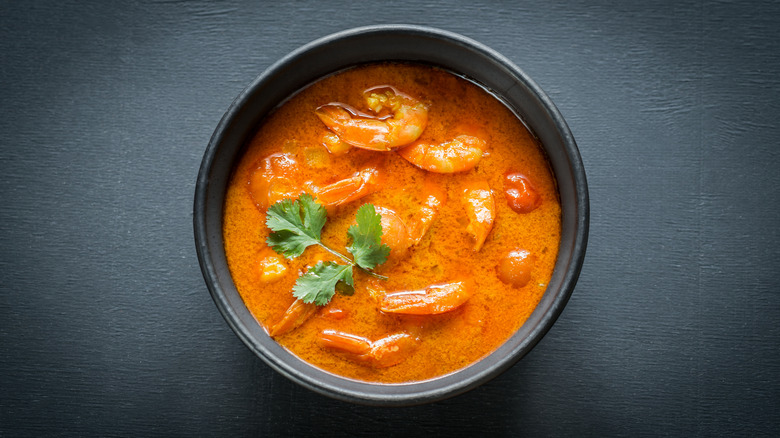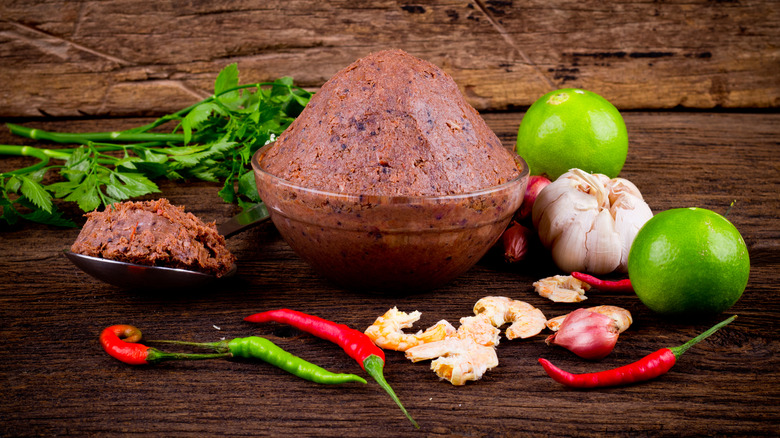The Ingredient You Shouldn't Skip For Thai Curry Paste
Thai curries are the spicy and creamy comfort food we all wish we had at the end of a long day. The vibrantly colored dishes come in dozens of complex flavors and are thoroughly seasoned with both spicy and sweet ingredients.
According to The Spruce Eats, there are three main categories of Thai curry – red, yellow, and green. These colors derive from the pigment of the curry paste used. The Spruce Eats notes that the pigmentation comes from the color of the unique ingredients that give each paste a different shade and taste. Red is the most adaptable curry variety and is often paired with coconut milk, which adds a smoothness to the heavy spiciness. Yellow has a more mild flavor, but the sweeter notes work well when paired with fish. Lastly, green Thai curry is the most popular for its fresh and distinctly Thai taste.
However, there is one ingredient that should almost always be added to curry paste, no matter the color, for the ultimate umami flavor boost.
Make sure to add shrimp paste
Shrimp paste is made up of shrimp that has been ground up, fermented, and mixed with salt (via The Spruce Eats). It is used in dishes all across Southeast Asia for its concentrated and pungent taste. This ingredient is crucial to add to almost any curry paste because it provides that unique and rich umami flavor that's different from just salting your food. But, as an added bonus, it does still add a pleasant amount of saltiness for balancing flavors. Serious Eats notes that shrimp paste is often a small addition to the many other flavors in curry, so it won't make your dish taste fishy. However, some curries — like gapi's funk — showcase it as one of the main flavors.
Shrimp paste is usually pretty easy to find in supermarkets. The Spruce Eats mentions that, in Southeast Asia, the ingredient is usually sold in very dry and firm blocks, while in North America, jars with a moist or even saucy paste are often sold. Some people may know it better in the North American region as prawn sauce.
As a substitute for shrimp paste, you can use dried shrimp or another fish sauce to create a layered and savory flavor profile. According to Serious Eats, a plant-based shrimp paste alternative called tua nao is often used as a substitute in Northern Thailand. So next time you indulge in some at-home curry, make sure to grab one of these unique ingredients for an authentic taste. Or, just order your favorite takeout! No judgment.

